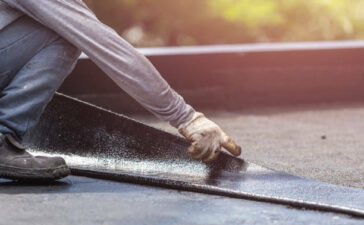Those who live in places with all four seasons would need generous amounts of patience and adaptability. After all, going from extreme heat to freezing cold each year doesn’t sound fun. However, be it hot or cold, it’s in human nature to think of all the ways on how to adapt to their current situation. In this case, you’ll be learning more about how to warm up your house during the cold season. Read on for the details.
1, Install Insulation
Insulating your home is the most effective solution to handle both warm and cold seasons. That’s because applying ceiling, wall and floor insulation manages heat transfer better in most parts of the building. Therefore, you could feel nice and cool during the summer, while staying warm when the cold is kept outside. And, you have foam to thank for.
Most insulation materials use foam to slow down and stop heat from escaping altogether. Without air leakage, your heating, ventilation, and air conditioning (HVAC) system saves more energy in warming up and cooling down the house.
2, Change The Layout
Certain parts of the house tend to be colder than the rest. Maybe it’s because you haven’t tried insulating your home yet, or, perhaps, you have no idea where the draft’s coming from. Either way, staying near these parts is guaranteed to be an uncomfortable experience. So, if you’re looking for a temporary solution, try moving your furniture around.
For example, in the living room. Arrange the seats far away from where you could feel the cold drafts. However, don’t block off the radiator or return vents, or you’ll discourage heat from circulating more.
Depending on what goes on in that room, make sure the seats are still organized in a way that encourages people to interact more. Because you’re all comfortable, conversation is easy to flow among each other.
3, Minimize Drafts
As mentioned earlier, even the tiniest crack on the wall or ceiling will lead to air leaks. And, having warm air leak out of the house only for cold air to come in can ruin all the work your HVAC system or heat pump is putting out.
Don’t leave the doors and windows hanging ajar. Attach door sweeps as soon as the cold starts to come in. If you have pet flaps around the house, fill them up with wool insulation or pieces of blankets to keep out the cold; after all, your pets wouldn’t want to leave while it’s cold outside, anyway.
Furthermore, if you’ve made it a habit to light the fireplace every night, refrain from doing that in the cold season. With your chimney open to let out smoke, the cold air is free to come down all it wants. So, as much as possible, use any material to block off any gap where cold air can come in.
4, Hang Thick Curtains
Many houses only have double-pane windows installed. Although these should be enough in most cases, they’re still likely to get cracks more than triple-pane ones. Since double-pane windows only have one space in between, you might still feel cold if you’re anywhere near them.
If you can’t afford to replace them with a triple-pane, layer them with thick curtains instead. This way, you can reduce the coldness from seeping through the glass. At the same time, you’re also trapping the warmth indoors.
5, Use Rugs
If you’re fond of walking around the house on bare feet, you might get a chill up your spine when you’re using tiles. Look for rugs and carpets that can stick to smooth surfaces. This way, no one will slip and slide once they take a step on the carpet. Additionally, having these accessories on the floor can alleviate any heat loss when there’s no insulation installed there.
6, Try Tin Foil
Aluminum foil is a reflective material, making it impervious to fire and heat. By utilizing its nature, transfer tape it on some patches of the walls, namely behind your heating system or radiators. This way, the heat won’t pass through the wall so easily. Therefore, this acts as makeshift insulation that bounces back the heat to the center of the room.
7, Let Sunlight In
Sunlight tends to be rare when the cold season comes rolling in, even more so when it’s warm enough to spend the day outside. If this happens, open the curtains to let that sunshine in. That way, you can soak up some Vitamin D and warmth while giving your HVAC system a break. And, by the time the sun starts to sink, draw the curtains closed once more to retain the little heat you collected during the day.
Warming Up
Even with the layers of clothes you’re wearing, keeping yourself nice and toasty in the cold is still difficult to manage. So, with how big your house is, you could already imagine how hard it’s going to be to warm it up. However, there are some tricks you might not know about that are worth giving a try to somehow lower the cold indoors.





